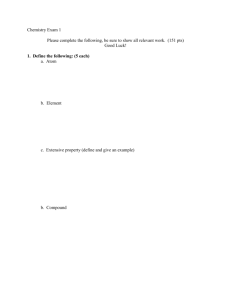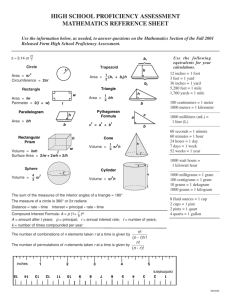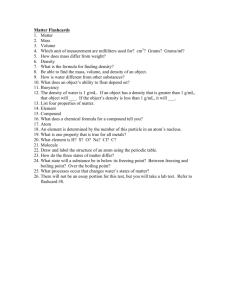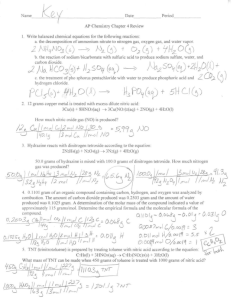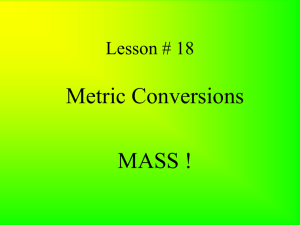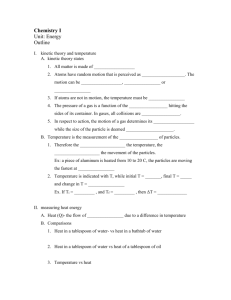File
advertisement
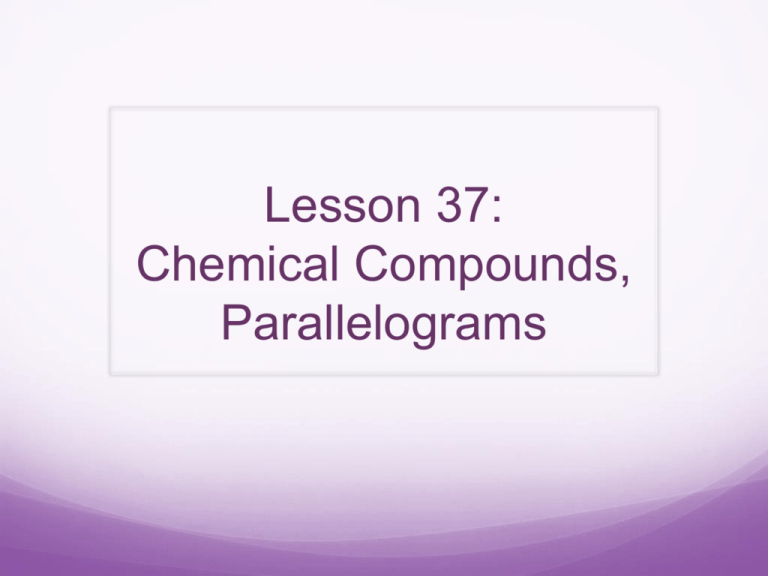
Lesson 37: Chemical Compounds, Parallelograms In chemistry courses some problems deal with the weight relationships of chemical compounds. Most of these problems are straightforward ratio and percent problems, and it is necessary to know only two things about chemistry to be able to work them. The first thing is that atoms always combine in the same combinations when they unite to form a specific compound. The chemical formulas for the compounds tell us the number of each kind of atom in a molecule of the compound. For example H2 O: formula for water. Each molecule of water has two hydrogen and one oxygen atom. NaOH: formula for sodium hydroxide. Each molecule has one sodium (Na), one oxygen (O), and one hydrogen (H). The second thing we need to know is that every kind of atom has a different weight. We express the weights of atoms in grams. The gram atomic weight of oxygen is 16 grams and the gram atomic weight for hydrogen is 1 gram. We will give the gram atomic weights of the elements in parentheses. In a problem about oxygen and hydrogen, we would note the gram atomic weights as (O, 16; H, 1) When elements combine to form a compound, we say that the molecules of the compound have a gram molecular weight that can be found from the gram atomic weights. Since the formula for water is H 2O We find that the gram molecular weight of water is 2(1 gram) + 1(16 grams) = 18 grams Example: The chemical formula for water is H O.2 if we have 3600 grams of water, what is the weight of the oxygen (O, 16: H, 1)? Answer: Gram molecular weight of water = 18 grams O/3600 = 16/18 O = 3200 grams Example: The chemical formula for ammonia is NH . This tells us that each ammonia 3 molecule contains one nitrogen atom and three hydrogen atoms. If we have 510 grams of ammonia, how much does the nitrogen weigh (H, 1: N, 14)? Answer: 14(1) + 1(3) = 17 N/510 = 14/17 N = 420 grams Example: The formula for ammonium chloride is NH Cl. This means that in one 4 molecule of ammonium chloride there is one atom of nitrogen, four atoms of hydrogen, and one atom of chlorine. How many grams of chlorine are there in 1060 grams of ammonium chloride (N, 14: H, 1: Cl, 35)? Answer: 1(14) + 4(1) + 1(35) = 53 Cl/1060 = 35/53 Cl = 700 grams Parallelograms have four special properties. 1. The pairs of parallel sides have equal lengths (are congruent) 2. Angles opposite each other have equal measures (are congruent) 3. The sum of any two adjacent angles is 180 degrees 4. The diagonals bisect each other Example: ABCD is a parallelogram and m<BAD is 65°. Find m<ADC and m<DCB. Find x and y. B C y+7 7 x+2 A 4 D Answer: m<DCB = 65° m<ADC = 115° y = -3 x=5 Example: ABCD is a parallelogram. Find x and y. A B (10x + 50)° (5x + 10)° (y + 10)° D C Answer: x=8 y = 120 Homework: Lesson 37 #1-30

